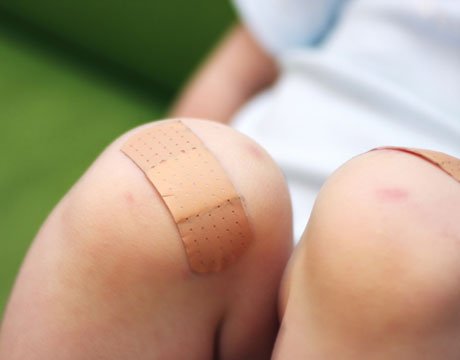Winter is coming, and
so is the dreaded flu! The good news is that there are things you can do to
protect yourself before you catch it. And there are also some things for what to
do if you do fall ill…
1. Get this year’s flu
vaccine
The thing is that it won’t be 100% effective against protecting you from the
flu, but the vaccine is associated with a lower rate of hospitalization from
the flu in children and in adults. It’s better than nothing and it makes your
immune system completely bad-ass! Please note: It will NOT make you sick; the
flu vaccine will not give you the flu! There are also many different ways to
get vaccinated – a shot, and a nasal spray.
2. Wash your hands
throughout the day
The two most important things you can do for yourself to avoid the flu is to
get a flu vaccine and the second is good hand hygiene. If washing your hands isn’t
an option, just use hand sanitizer with a 60-95% alcohol concentration.
- Use soap and warm water, scrub and lather for 20 seconds
- Make sure to get between your fingers, under your nails and up your wrist
- Rinse off after 20 seconds and dry with an air dryer or paper towels
If you use hand
sanitizer make sure to put enough on your hands and cover your hands for 15 to
20 seconds.
3. Stop touching your
face
One way the flu spreads is when you touch an infected surface and then touch
your eyes, nose or mouth. It’s a fact that people touch their face 15 to 50
times in an hour. If you want to minimize face-touching: keep a box of tissues
and use them whenever you have an itch. If you have long hair, keep it pulled
back.
4. Eat your fruits and
veggies
The main foods that build up your immune system are green vegetables, berries,
mushrooms and onions. Zinc and Vitamin D are also important in protecting your immune
system – supplements can help. The key here is to make sure you’re eating a
nutritious diet BEFORE you get sick, because it takes months to build up your
immunity. So, hit up the produce aisle as soon as possible!
5. Limit your exposure
to sick people
If your coworkers come to work sick – tell them to go home! A virus can spread
around the office and be found on half of the work surfaces in as little as
four hours. If you can’t avoid sick people, then make sure you clean your hands
before and after interacting with them.
6. Stop smoking, and
avoid secondhand smoke
Studies show that smokers are way more likely to contract the flu than
nonsmokers, and that being around second hand smoke also increases your risk. If
you need help quitting visit: smokefree.gov for advice and resources on how to
kick the bad habit.
7.Get plenty of sleep
Not enough sleep can weaken your immune system, which makes it easier for you
to get sick. Aim to get between 7 to 8 hours of sleep each night. Sweet dreams!
8. Exercise regularly
People who exercise more often have a stronger immune system than people who
sit on their butt all day! Here are some examples of moderate exercise:
- Walking at a fast pace.
- Hiking
- Biking
- Yoga
- Use the stair climber at the gym
- Washing your car
9. If you’ve got the
flu – stay away from work & people
The best thing to do is to stay at home and rest and avoid all close contact
with people! You can be contagious before you even start showing systems, so do
everyone a favour and stay at home. Cover your mouth and nose when you cough
and sneeze to keep from infecting people around you. Your germy coughs and
sneezes can travel up to 5 metres around you! And if you do use your hand to
cough, make sure you wash it afterwards.
10. Know what meds can
help you
Antivirals – these can shorten the length of your flu by about a day, but you
need to take it when the first systems start to show. Most people figure out
they have the flu too late.
Antibiotics – the flu is a virus, which means that antibiotics will have no
effect on it at all. NONE
11. Know when you need
medical care
These are signs you should go to the doctor as soon as possible: If you are
having trouble breathing, or if your fever is high and sustained. Anyone who is
over the age of 65, pregnant or under the age of 5 is considered to be high
risk, and they should be in touch with their doctors.
Wishing you a healthy
flu season!
Take a look at
Supple Doctor today, there are thousands of medical products to choose from. Whether you are looking for professional medical equipment and first aid supplies or disposable instruments and blood pressure metres, we have a full range to choose from.



























